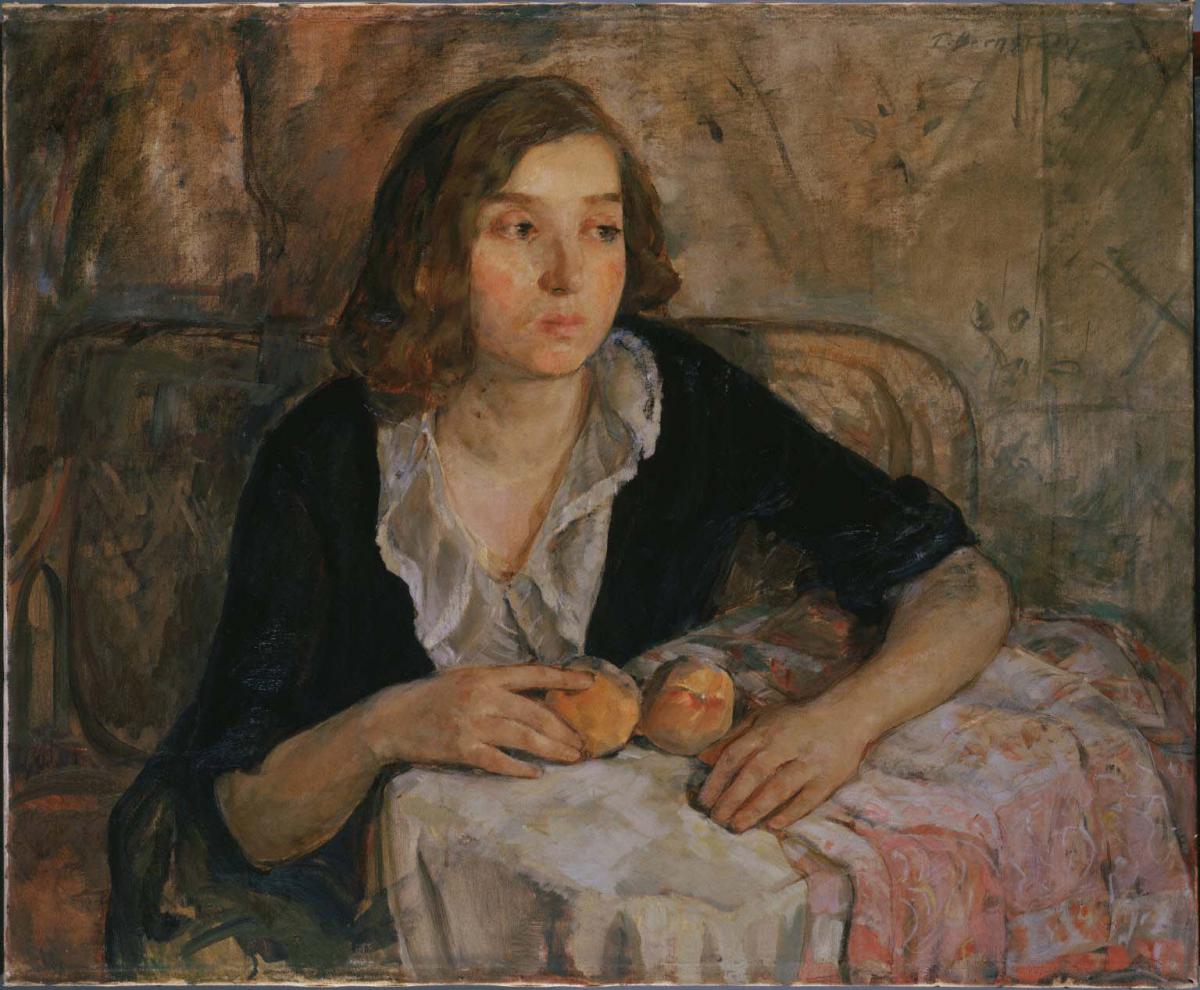Girlhood
Theresa Bernstein ( 1921 )

Throughout her career, Theresa Bernstein sought to paint the humanity she saw in the world. A champion of woman and a strong supporter of the suffrage movement, her work closely examined the very real, very raw, and varying emotional aspects of womanhood. Bernstein portrays women with dignity, individuality, and an intimation of their goals and potential accomplishments. Characteristic of her portraits from the 1920s, Girlhood is an image of Bernstein’s husband William Meyerowitz’s younger sister Minna. A talented pianist, Minna, along with her four siblings and mother, was financially dependent on William and Theresa in 1921. This piece was painted during the summer of 1921 in Folly Cove, Massachusetts, near Gloucester, where the Meyerowitzes were the guests of their close friend, Ellen Day Hale, daughter of author Edward Everett Hale. While visiting her brother and his wife, Minna posed in a stone studio near the Hale home, her hands placed near three peaches. The fruit, wrote Bernstein, signified “the three stages of life—youth, development and maturity. The green peach, the partly blooming peach and the fully ripened peach represented the full cycle of the fruit’s ripening.”
Bernstein characterized her sister-in-law with tenderness, which is evident not only in Minna’s facial expression, but in the soft light and feathery brushwork she uses. Lost in thought, Minna appears to be at a crossroads in life; leaning on the model’s stand and touching the green peach, she seems curiously reticent, as if afraid to make the next move. Bernstein explained her objective in portraiture: “To paint a good portrait, … you have to love people …. But you have to look beyond the fleeting expression ….You have to make the sitter forget that he’s posing. I like to talk with him or her …. Many painters try to get the expression first; then they keep on painting and spoil everything. I save the expression for the very end—when I know the person.”
Three years after completing Girlhood, the painting was displayed in an exhibition of “Contemporary American Oil Paintings” at The Corcorcan Gallery in Washington, D.C. She fondly recalled the first people to greet her were “a gentleman and a lady” who inquired about the work. Not catching their names, Bernstein learned the next morning that she had met Duncan and Marjorie Phillips and that they had just purchased the painting for “the most modern gallery in Washington.”